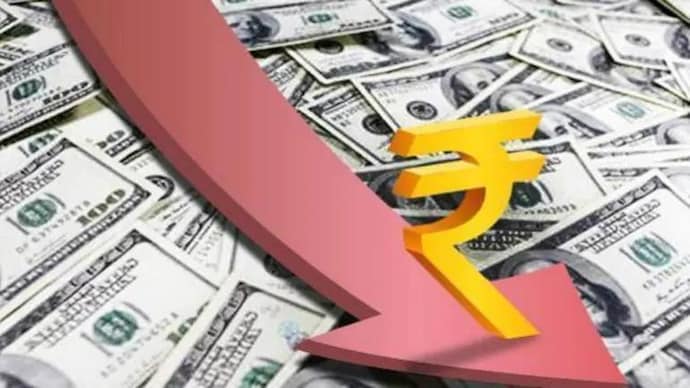Dollar US to Rupee Hits New High: What’s Driving the Change?-The exchange rate between the Dollar US to Rupee has recently surged to new heights, sparking concerns and discussions in the financial markets. For those closely monitoring the relationship between these two major currencies, the recent spike in the Dollar US to Rupee rate is a significant event. Understanding the factors behind this change is essential, as it has far-reaching implications for businesses, investors, and consumers alike.
The Current Dollar US to Rupee Situation
As of the latest market data, the Dollar US to Rupee exchange rate has reached an all-time high of around ₹84-85 for every US Dollar. This represents a notable increase from the previous rate of approximately ₹80-81 in the past few months. The sudden rise in the Dollar’s value against the Rupee is drawing attention from financial analysts, government officials, and economic experts across India.
While fluctuations in exchange rates are common, this sharp increase has raised important questions regarding the underlying causes of this trend. So, what’s driving the Dollar US to Rupee rate to such high levels?
Global Economic Conditions and the Dollar’s Strength

One of the primary drivers behind the Dollar US to Rupee surge is the global economic landscape, particularly the performance of the US economy. The US Dollar has been on an upward trajectory due to a combination of factors including rising interest rates, economic resilience, and a flight to safety by investors.
The Federal Reserve’s decision to raise interest rates in an effort to combat rising inflation has contributed significantly to the strengthening of the Dollar. When the Fed increases interest rates, US assets become more attractive to foreign investors, leading to increased demand for the Dollar. This, in turn, pushes the Dollar’s value higher against other currencies, including the Indian Rupee.
Impact of US Federal Reserve’s Interest Rate Hikes on Dollar US to Rupee
Interest rate hikes by the US Federal Reserve directly influence the Dollar US to Rupee exchange rate. As the US continues to raise interest rates, foreign investors are incentivized to move capital into US assets, such as Treasury bonds and stocks, as they offer higher returns. This influx of foreign capital into the US strengthens the Dollar.
For India, the higher Dollar demand translates into a weakening of the Rupee. As a result, Indian businesses that rely on imports face higher costs, and the overall economic environment becomes more challenging. Moreover, the RBI may find itself intervening in the market to prevent the Rupee from weakening too much, but even then, the impact of the Dollar’s strength remains significant. (Read More: Entrepreneurship as the Engine of Economic Pulse on 2024: Driving Innovation and Growth)
India’s Trade Deficit and the Dollar US to Rupee Exchange Rate

India’s trade deficit is another crucial factor in the Dollar US to Rupee exchange rate. The country imports significantly more goods than it exports, which means India needs a large amount of foreign currency, particularly US Dollars, to pay for its imports. As the demand for the Dollar increases, the Rupee weakens.
The situation is exacerbated by rising prices for key imports, such as crude oil, which India heavily depends on. As global oil prices remain volatile and continue to rise, the cost of importing oil increases, putting further pressure on the Rupee. This imbalance in trade and the constant demand for US Dollars is one of the key reasons the Dollar US to Rupee rate has reached new highs.
The Role of Geopolitical Tensions in Dollar US to Rupee Fluctuations
Geopolitical tensions, both within India and on the global stage, also play a significant role in influencing the Dollar US to Rupee rate. When there are geopolitical uncertainties, such as regional conflicts or global political instability, investors often seek the safety of the US Dollar. The US Dollar, often regarded as a “safe-haven” currency, sees a rise in demand during such times.
In recent months, geopolitical tensions in various parts of the world, including concerns over the Russia-Ukraine conflict and ongoing trade issues between major economies, have contributed to the strengthening of the Dollar. As these global events unfold, the Dollar US to Rupee exchange rate responds to investor sentiment and capital flows, which have pushed the Dollar higher relative to the Rupee.
Domestic Economic Challenges Contributing to the Dollar US to Rupee Rise
At the domestic level, India has been grappling with several economic challenges that have contributed to the weakening of the Rupee. Inflation in India has been on the rise, driven by factors such as higher food and fuel prices, which have affected the purchasing power of the Indian Rupee.
Furthermore, while the Indian economy has shown signs of growth, particularly in sectors like technology and services, the overall economic recovery has been uneven. The inflationary pressures and slow pace of recovery in certain industries have hindered the strength of the Rupee. As a result, the Dollar has gained an upper hand in comparison, driving the Dollar US to Rupee rate to new highs. (Read More: Investing in 2024: How the US Dollar Influences International Markets)
Foreign Investment Flows and Their Impact on Dollar US to Rupee
Foreign direct investment (FDI) and portfolio investment flows are also key determinants in the Dollar US to Rupee exchange rate. When foreign investors view India as an attractive investment destination, they bring in foreign currency, boosting demand for the Rupee. However, if foreign investment declines or shifts away from India, the demand for Rupees decreases, which can lead to a depreciation in the currency.
In the current scenario, the demand for the Indian Rupee has been lower than expected, especially as foreign investors have been wary of India’s economic challenges. The ongoing global economic uncertainty has made investors more cautious, which has indirectly driven the Dollar higher against the Rupee.
The Dollar US to Rupee and Inflationary Pressures in India
Inflation plays a pivotal role in the Dollar US to Rupee exchange rate. When inflation is higher in India than in the US, the purchasing power of the Rupee erodes, making it less valuable compared to the US Dollar. India’s inflation rate has been relatively high in recent months, primarily due to rising food and energy prices. This inflationary environment has made it more difficult for the Indian government and central bank to stabilize the Rupee.
As inflation continues to rise, the Reserve Bank of India (RBI) may attempt to curb inflation through monetary policy tools like interest rate hikes or foreign currency interventions. However, the effectiveness of these measures may be limited in the face of persistent global inflationary pressures, which only adds to the strength of the Dollar relative to the Rupee. (Read More: US Dollar Strengthens: What It Means for the Global Economy in 2024)
The Impact on Indian Consumers and Businesses

The rising Dollar US to Rupee exchange rate has direct implications for Indian consumers and businesses. For businesses that import goods and services, the increased cost of imports can lead to higher prices for end consumers. Products such as electronics, machinery, and fuel are likely to see price hikes, affecting both individuals and companies reliant on foreign goods.
For consumers, the rise in the Dollar US to Rupee rate may also lead to more expensive overseas travel and imported products. Additionally, Indian companies with significant overseas operations or debt denominated in US Dollars could face higher repayment costs, further burdening the local economy.
Monitoring the Dollar US to Rupee Going Forward
Looking forward, the Dollar US to Rupee exchange rate will continue to be influenced by a variety of factors, including the trajectory of US interest rates, India’s economic policies, and global geopolitical developments. While the current rate represents a new high, the currency markets remain volatile, and changes in any of these factors could either stabilize or further weaken the Rupee against the Dollar.
For businesses, investors, and consumers alike, staying informed about the Dollar US to Rupee trends is essential to making informed financial decisions. Whether it’s for international trade, investments, or personal financial planning, understanding the forces driving the exchange rate will be crucial in navigating the future of this currency pair.




